How To Keep Head Position And Eye On Ball With Stride Length For Baseball & Softball Swing | MLB Players Load Stride Hitting Vs No Stride Batting Drills
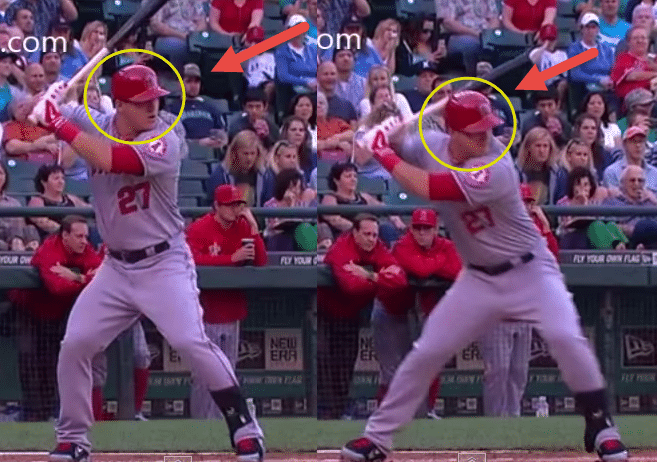
Note the gentleman in the stands with the hat and Mariners shirt on (red arrow) as Mike Trout’s head moves forward to landing. Photo courtesy: YouTube user: PastTimeAthletics.com
Learn how to keep head position and eye on the ball with stride length for baseball and softball swings. Discover MLB players load stride hitting versus no stride batting drills. PLEASE NOTE: it is our position at HPL that the stride mostly contributes to timing, NOT power.
Perfect Swing Hacking With Forward Momentum
The most common objection I hear from my hitters is their coaches are dumping on them for using forward momentum. Because – they say – there’s too much head movement! These coaches keep saying the perfect swing shouldn’t have head movement.
In a way, they’re right! But there’s a bit of confusion as to when head movement is okay…and not okay. You see, the perfect swing, has head movement. ALL dynamic movement does. Did you know our head bobs up and down when we walk and run? Try watching television upside down and you’ll see it clear as day.
Click Here for a SABR.org study titled: “Baseball Swing Stride and Head Movement Relationships”, from SAMUEL J. HAAG, an assistant professor of Kinesiology and Health Sciences at Concordia University, St. Paul. The study concluded:
“The present findings suggest stride height and stride length are not associated with displacement of the head during the baseball swing in experienced collegiate baseball players.”
But it’s the timing of head movement that matters. In this post, we’re going over:
- Balance without thinking,
- Debunking a common objection & a study, AND
- Perfect swing examples…
SCIENCE-BASED TRAINING:
Improve your hitting strategy dramatically by applying human movement principles.
Learn not only how and what to train but also the science behind the methods.
Balance Without Thinking
Proprioception. I know it’s a big ugly word. But it has A LOT to do with the perfect swing. At least when we talk about head movement. Experiencing proprioception is easier than saying the word itself!
Try this…
Stand up, lift one leg, and close your eyes… You feel your standing ankle and foot wobbling to balance your body? This balance happens without you having to think about it. It’s an unconscious process, like breathing. Here’s how balance without thinking breaks down when looking at the perfect swing…
- Scenario #1 The Sit Back Hitter – during stride, keep 60% of weight on BACK leg, being soft with the landing foot like you’re stepping on unbroken eggshells.
- Scenario #2 The Forward Momentum Hitter – during stride, commit 60% of body weight to FRONT leg at landing, thereby breaking the “eggshells” in scenario #1.
Let’s apply proprioception to where the two scenarios left off above… In Scenario #1, to bring the body back to balance, the brain shifts the weight forward during the Final Turn. In other words, the heads moves later.
In scenario #2, to restore balance, the brain shifts the weight back during the Final Turn. Because of the transfer of linear into angular momentum, the head will become the center axis of rotation along with the spine.
We sacrifice head movement early, for little to no head movement later.
Do an experiment with the two scenarios above. Record your swing using the Coaches Eye or Ubersense app. Try and swing as hard as you can under complete control. And note the change in head position between the two scenarios. In a perfect swing, you’re going to have head movement. But the question is, when do you want it? BEFORE or DURING the Final Turn?
Debunking a Common Objection & a Study
CLICK HERE for a great FanGraphs study that Dan Farnsworth did on June 17, 2013 titled “Breaking Down the Swing: Best Hitters of 2012”. Scroll down a ways and start reading under the section: “Keep Your Head Still”.
Farnsworth compiled a list of the top 50 hitters from the 2012 season according to Fangraphs’ Batting component of WAR. He looked at side views of each of these hitters from highlights of the 2012 season in which each player hit a homerun. You can read the details of how he compiled his measurements in his post.
As Farnsworth says, the main complaint coaches have with Forward Momentum, or early head movement, is that moving the head forward “speeds up the ball”. This may be true…
But during the stride, the hitter hasn’t made a definitive decision to swing yet. So again, if you know head movement is inevitable during dynamic movement, then when do you want it to happen? BEFORE or DURING the Final Turn?
Does a quarterback “rolling out” to throw to a fast moving receiver have head movement? Yes, until his plant leg hits the ground before throwing. Does a soccer player have head movement quickly dribbling the ball down the field to get closer to the goal, weaving in and out of defenders? Yes, until their plant foot hits the ground to kick. I can go on and one with Olympic Throwers and Shot Putters!
Really think about the answer to that question.
Perfect Swing Examples…
When you watch the following videos, pick out someone or something in the stands behind the hitter to use as a frame of reference in watching for head movement. The following examples were the TOP-5 OPS (On-Base Plus Slugging Percentage) hitters in 2014:
1. Victor Martinez (toe tap)
2. Jose Abreu (toe tap)
3. Andrew McCutchen (slide step)
4. Giancarlo Stanton (toe tap)
5. Mike Trout (medium leg kick)
6. Paul Goldschmidt (little to no stride – technically a toe tap)
7. Albert Pujols (little to no stride)
- Fix Late Swings Fast: 2025 Pitch Recognition & See-Decide-Swing Training for Youth Baseball Power Hitters - October 6, 2025
- Safe Youth Weighted Bat Training: Proven Overload/Underload Drills to Increase Exit Velocity in Games Starting Tonight - September 29, 2025
- AI Coaching Course 2025: Youth Baseball & Softball Practice Plan + Off-Season & In-Season Workout Builder Fast - September 23, 2025


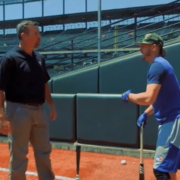

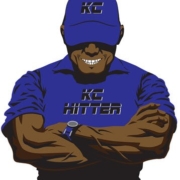

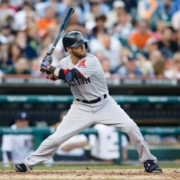
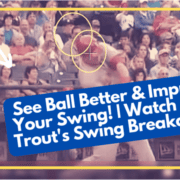

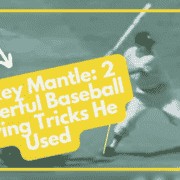



Joey I use this exact picture of mike trout from a video. The coach behind him playing peekaboo is the marker to show forward movement. Love this.
Great minds think alike Gerty 😉
Absolutely a great article, Joey! Ruth, Gehrig, Williams, Mays, Mantle, Aaron and Bonds all had strides, some longer than others. Even the poster boy for the no stride swing, Albert Pujols, is back to striding again. David Wright no longer hits HRs. Could his no stride swing, during which he never gets his front foot open enough, to blame? Certainly it is not the distance of the fences at Citi Field. A hitter needs linear momentum and he needs angular momentum. The question is the degree. It’s all about dynamic balance.
Joe, you may be onto something. DW isn’t a big guy, but CAN hit like one. Without forward momentum and striding closed though, I’m afraid he’s hamstringing his potential.
Hey Joey.
I reckon those who are not familiar with proper “SPINAL ALIGNMENT” are also not familiar with how the upper torso from the top of one’s head to the bottom of one’s spinal column should be positioned during their body movements through weight shift etc. and yes I wholeheartedly do agree with you concerning the simple fact that it is not how one study’s but what one study’s and also who one study’s from that counts, I have learned to and do seek out the best of the best to learn the best of the best of what I want to learn, this I learned many moons/seasons ago from former major leaguer, Johny Hopp who I played for during my short self destructive minor league career.
I also have learned to apply as you say proven human body movement science to hitting, pitching and other body movements of one’s game.
Learning these things takes away the uneducated and opinionated guessing game that is ingrained in most peoples minds.
My philosophy is, if you cannot show a player how to correct and adjust, “SHUT UP” and do not tell him/her what you might think he/she is doing wrong which most likely what you tell him/her is wrong in the first place, find someone who knows and does not just throw an opinion out there which is what most instruction is all about nowadays anyway.
Keep your very informative info coming.
Great Base Ball-N
Don Ervin
Don, you hit the nail right on the head. I don’t care if someone’s baseball/softball experience is 5 years or 25 years…the point is that if they have a grasp of human movement principles, then I’ll listen to what they have to say. Also, I took your email address off your comment because I don’t want SPAM bots sending you extra mail 🙂 Anyway, I think people can contact you by clicking on your name/link. I could be wrong. Just looking out for a like-minded coach 😀
Joey,
David Wright also doesn’t skip his back foot, though he is pretty wide. He also collapses on his back leg. Time will with the pushed in fences at Citi Field this year.
Fall forward and ” Catch your Head”. The swing happens between your heel/foot and your head. From there you compress mechanics (middle-in) or expand mechanics (outer 3rd/out and low)
UTUBE MLB slow mo and you will see a foot and a head frozen dead still in time while the action ensues.
I saw David Wright hitting the other night and thought it was quite different than before. The accordion effect and springy facial components were there, but it just lacked that umph! No fomo nor release of the backside tension explains a lot. I didn’t have the angle to see the fomo or the back foot.
Great piece, excellent production!
I love that cue Blake! Teaching efficient mechanics are great, but cues are priceless. Thanks my friend, I’m going to use that one with my local hitters. Yeah, David Wright is playing to 70% of his max. And that’s saying a lot. Right now, he ends up in top 30 hitters in MLB every year. With the changes you mentioned, he could be in the top-10! And a legit contender for league MVP.
I Just had a conversation with a coach who is using the squish the bug method. I referred to five videos in this article and used the word proprioception to explain what happens to the back foot and leg during a perfect swing. When the conversation was over the coach said he is going to shit-can the bug method…..As a member of the Hitting Performance Lab, I’m calling this my first home run. Joey Myers what would you call it, a hit, double, triple, HR or strike out.
Dude, EJ, that is a grand slam! I think the baseball industry is most fertile right now for coaches to be swayed over to the “science side”. I think people are tired of hearing about “grand-pappy’s” way of hitting an unknown moving pitch. It’s amazing how fragile a 40-year old+ male ego can be, so we have to present it in a way that doesn’t revert to a pissing contest. I always say to my parents, hey, this isn’t what I say, it’s what science says. Keep up the fight EJ!
E.J…That’s definitely hit, “where the grass doesn’t grow” by BOTH yourself AND the coach who is open minded enough to accept the evidence and not blindly regurgitate the same tired dogma. Keep preaching the word brother!
Here! Here Ryno!
Another good one JM. Guys that use forward momentum to gain higher ground reaction forces swing the bat quicker and faster than guys who don’t. When a hitter has loaded this way, he actually has more time to make a go or no go decision. It’s the Bautista concept. He was all about being quick and it literally killed his swing for power and contact.
It’s crazy Kyle, on paper, you’d think forward momentum wouldn’t have all the benefits you mentioned…but it does. And this is why most hitting enthusiast think this is hitting backwards. But we all know it isn’t 😉
Joey, I was looking at the front foot in the videos above… VMart and Abreu land with their toes pointing across the plate and end up rolling over their ankle (VMart) or popping their toe up and rotating on the heel (Abreu)… Stanton (who’s power seems to allow him to get his hips through later than all the others) lands at 15-20 degrees and rolls/pops some, while Trout lands at about 30 degrees and rolls/pops a little. Only ‘Cutch lands at 45ish and has a stable foot throughout – it also seemed to me that he got his hips through earlier than everyone else.
I’ve always been concerned when I see hitters rolling over on that front ankle – probably due to wrecking my ankles playing soccer from 2nd grade through my time at a little D3 college – and have seen some guys hurt themselves doing so. Is this something worthy of note?
Also, beginning to work him through the Pitch Plane Dominator Program, my 10yo is learning about the necessity of flexibility since when he counter-rotates his torso it is then a little – for coordination and flexibility reason – hard to land with the foot open to build the catapult’s tension. 😉
Alan, great observations on the front foot landing and rolling during the swing. Sometimes camera angles can be deceiving. Some hitters it may look like they’re more closed than they are because the that. That being said, I had a local coach tell one of my hitters they were rolling onto the ankle with their front foot during the turn and to stop that. My hitter said those pitches were inside. So what we typically see a rolling to the outside part of the foot (5th metatarsal) on inside pitches. And the front foot more flat hitting outside pitches. We have to take into account pitch location when describing what we’re seeing a hitter do with the lead foot after landing.
Don’t worry, getting a young hitter to feel showing the numbers to the pitcher AND landing open is difficult. But it’s crucial to compressing the spring 🙂
Joey,
This may be obvious but, is it safe to say that more linear momentum in the stride translates into more ground reaction force and, therefore, more angular momentum providing the arms are in the most efficient position?
Joe, this is something we have to test. I’ve learned that more is not always better. We have to find the sweet spot of things. I tell my hitters about the Goldilocks Golden Rule…we don’t want to do something too much or too little. We want what’s just right. A video I posted from ZenoLink on YouTube found in their studies with professional hitters that the stride length should be 3.75 times hip width, at landing the stride foot should be open to a 65-degree angle, and the direction of the stride foot should be slightly closed (in towards the plate) by 10-degrees. These things WILL ensure proper transfer of angular momentum and GRF’s.
Yes, I saw that zenolink clip. Thanks. I’ve been reading the biography of Mantle, “The Last Boy,” by Jane Leavy. She does a great job on Mantle’s swing, especially his stride. Good stuff. Check it out.
Ooooo, I’ll have to check that out Joe, thanks.
Joey,
She discusses explicit vs implicit memory as it pertained Mantle’s answer to a question posed by a young Mike Epstein when the Senators played the Yankees in the late 60s. You’ll like that.
Very cool Joe, I’ll have to check it out 😀
Hey Joey, i just finished your book. Excellent read, i learned a lot. You had some great drills in your book. My son has a lot of changes to make in his swing to switch to the catapault. Do you have a recomendation on order of changes to make? For example start with the grip, move to showing numbers and hands ? Or just progresively in any order? Thanks Mike
Mike, thank you for your support! I’d start how I laid out the Chapters, sequentially. That’s one reason I organized the drill chapters that one. Typically how I’d work on each with my hitters. Please keep me updated!